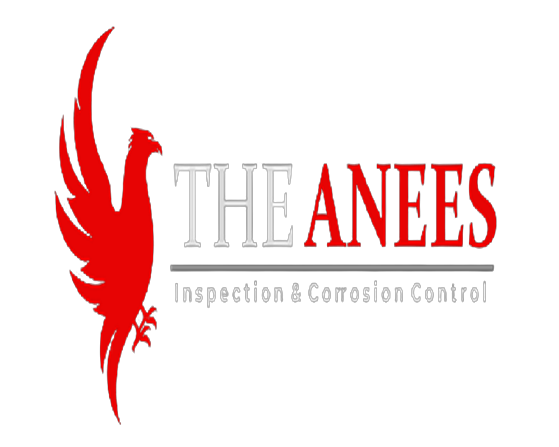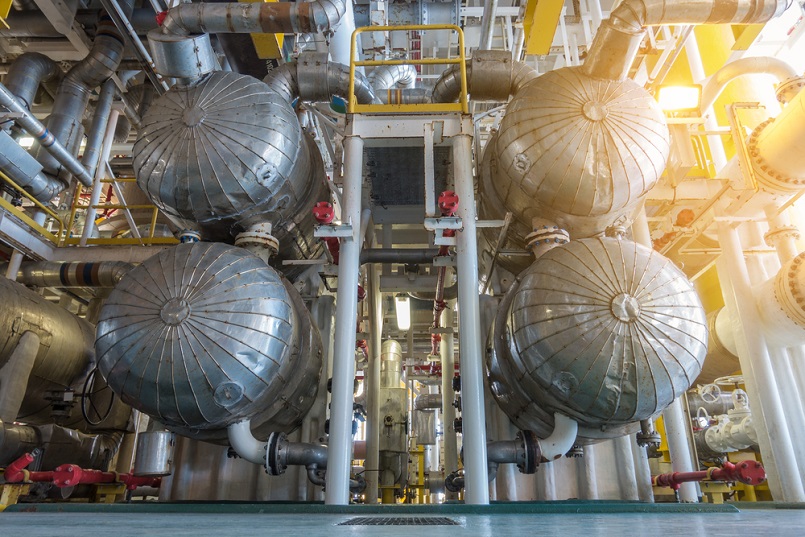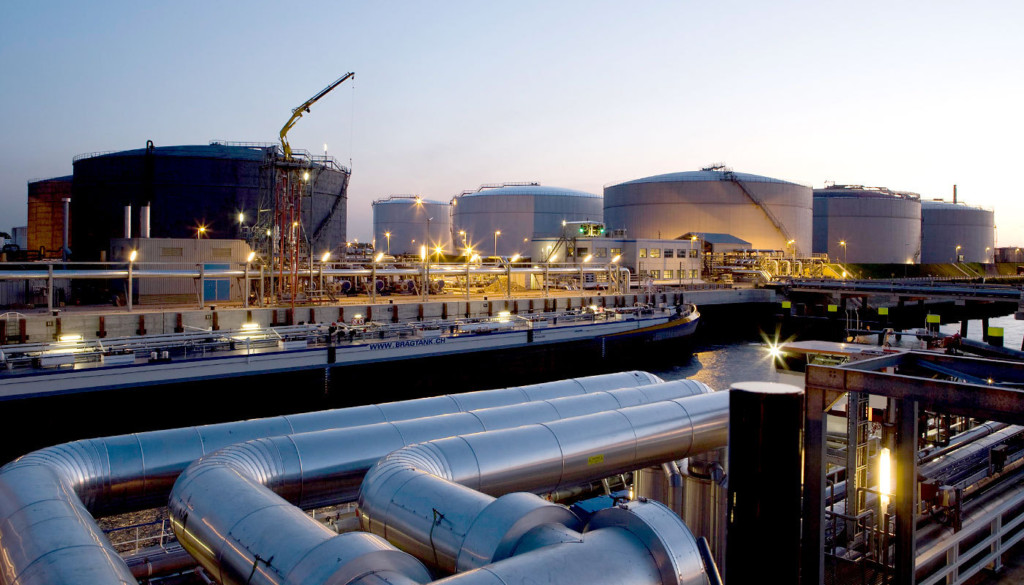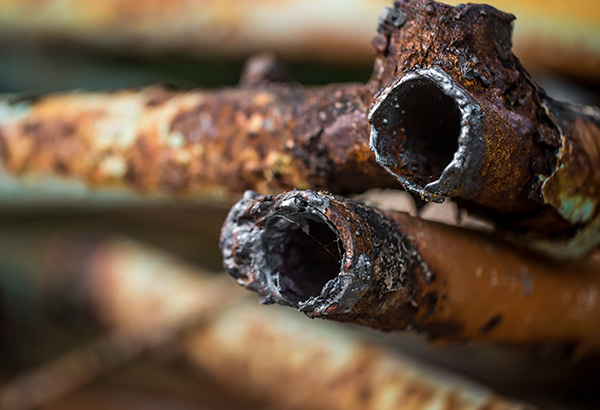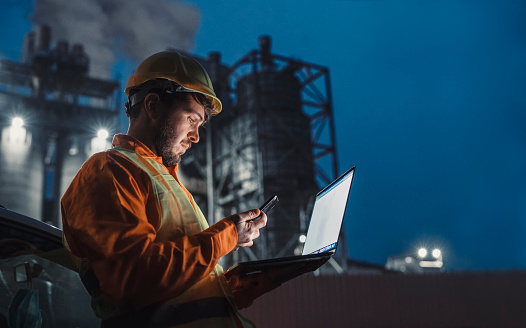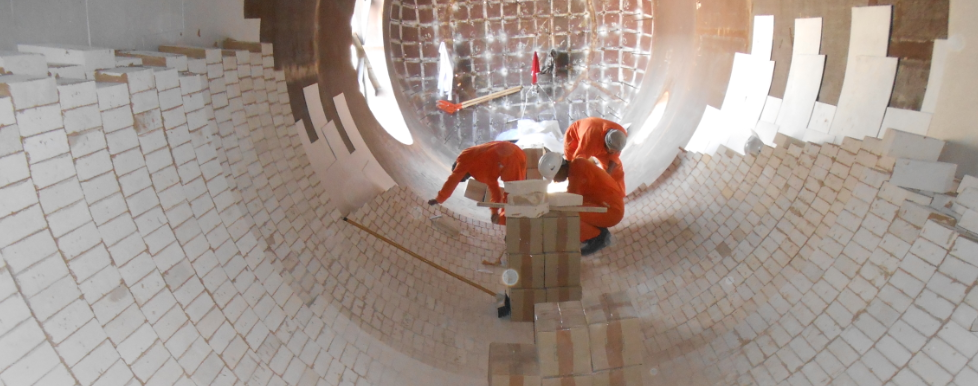This article will teach you everything you need to know about pressure vessels. Continue reading to learn more about:
- What exactly are pressure vessels?
- Types of Pressure Vessels
- Pressure Vessel Material Selection
- Pressure Vessel Quality Testing and Inspection
- And plenty more.
What Exactly Are Pressure Vessels ?
Enclosed containers known as pressure vessels are used to store gases, liquids, and vapors at pressures that are either much greater or lower than atmospheric pressure. They are extensively employed in a number of different industries, including the petrochemical, oil and gas, chemical, and food processing sectors. Pressure vessels include tools like reactors, flash drums, separators, and heat exchangers.
Each pressure vessel must be used within the safe operating ranges dictated by its design temperature and pressure. Because the unintentional release and leakage of its contents poses a threat to the environment, the design, building, and testing of pressure vessels are carefully carried out by trained individuals and are subject to rules. The American Society of Mechanical Engineers Boiler and Pressure Vessel Code (ASME BPVC) Section VIII and The American Petroleum Institute API 510 Pressure Vessel Inspection Code are two of the more well-known standards.
Types Of Pressure Vessels
Pressure vessels can be categorized based on their shape or use.
Pressure Vessel Types According to Their Use
Storage Vessel:
For industrial uses, storage tanks are used to hold liquids and gases. The vessel may be used to store finished goods like compressed natural gas (CNG) and liquid nitrogen or to contain fluids in a subsequent operation. The most common material for storage tanks is carbon steel.
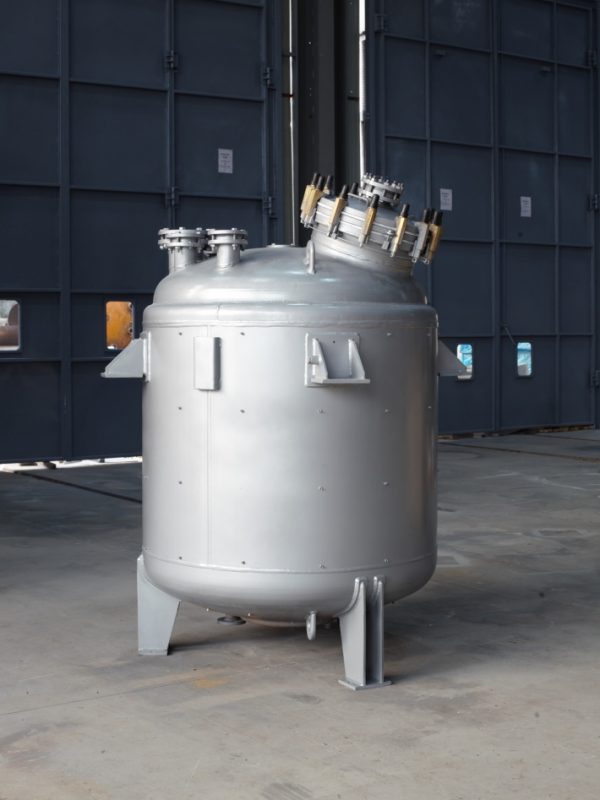
Heat Exchangers:
Heat is transferred between two or more fluids using heat exchangers. In the food, pharmaceutical, energy, and bioprocessing industries, they are frequently employed. The temperature, flow, and thermal properties of the fluids involved in heat exchange, as well as the thermal properties of the conductive partition, all affect how heat exchanger equipment operates (for indirect contact heat exchangers). The temperature difference between the hot and cold fluids, as well as the internal pressure holding the fluids, both put stress on the materials in a heat exchanger.
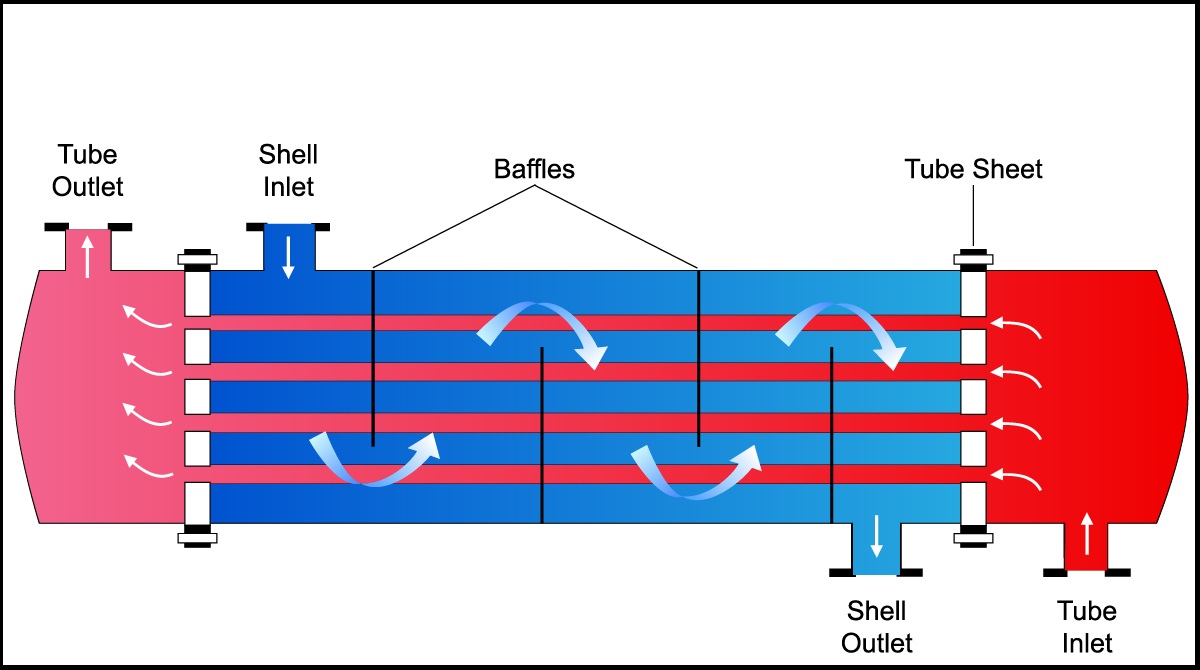
Boilers:
Boilers are devices for heat transfer that use fuel, nuclear, or electrical energy as heat sources. Typically, they consist of a vessel that is enclosed and that permits heat to flow from the source to the fluid. They are mostly employed to heat liquids. Inside the boiler, fluid frequently transitions from the liquid to the vapor phase. The vapor that the boiler produces is employed in power generation as well as numerous heating applications. In order to speed the turbine blades, steam boilers produce steam at a high pressure. In order to withstand such high pressures and thermal stress, the boiler vessel must be very strong. Strength generally declines with temperature for most materials.
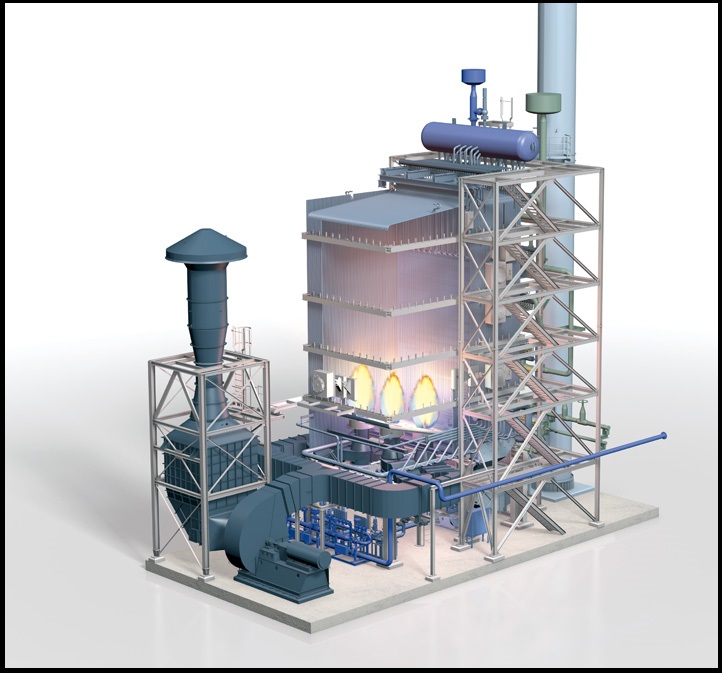
Process Vessel:
Pressure vessels fall within the broad category of process vessels. These are the containers used in industrial operations like agitation, mixing, decantation, distillation, mass separation, and chemical reaction. The nature of the process being used and how the substances being processed alter determine how a process vessel’s internal pressure changes. The following are some examples of specific process vessel types:
Fractional Distillation Column:
Based on the variance in their volatilities, it permits the separation of a mixture of liquids. This procedure involves heating the mixture to a point when the more volatile component turns into the vapor phase. The internals of the column determine the vessel’s height (packings or trays).
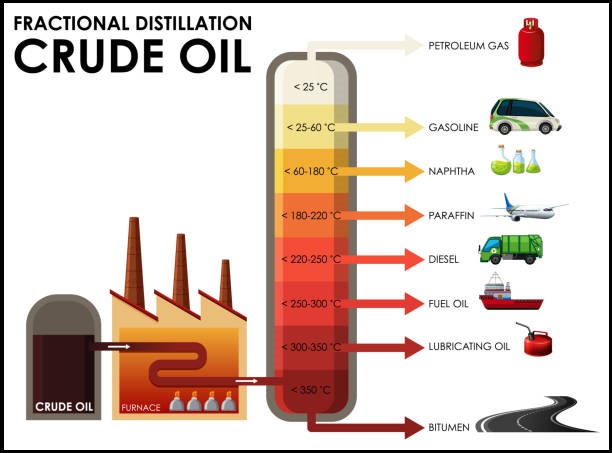
Decanters:
It permits the separation of mixtures of liquid and solid. The vessel’s bottom is where the denser component settles. This kind of vessel is either horizontally orientated or has a small cross-sectional area.
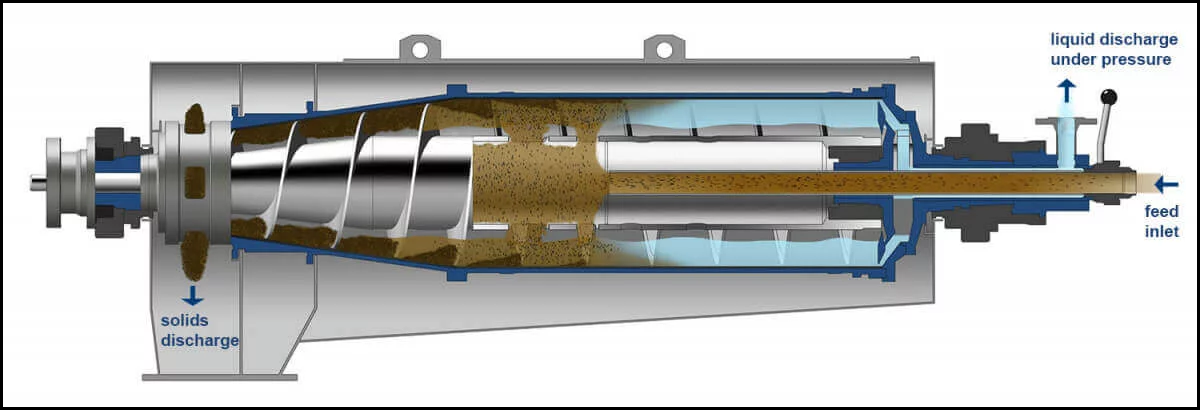
Industrial Mixers:
It is a type of pressure vessel with motorized blades for homogenizing and emulsifying one or more substances. There may be a combination of solid and liquid ingredients in the mixture. Depending on the level of homogeneity, agitating machinery runs at different speeds.
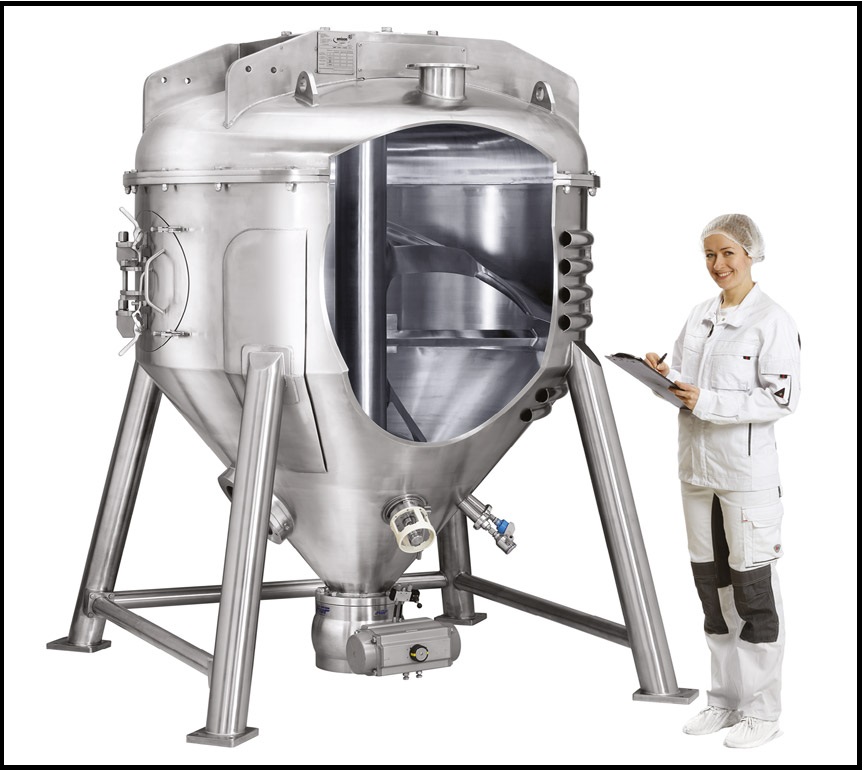
Chemical Reactors:
They are sealed containers used to keep the catalysts and reactants separate during a chemical reaction. To encourage molecular interaction between the reactants, they have agitators. To absorb the heat produced, a chemical reaction is often conducted in a jacketed vessel. The reactants can either release heat (exothermic) or absorb heat (endothermic) during a reaction, depending on the reaction’s heat. If gaseous products are produced, the internal pressure rises as the reactants are transformed into the final products, and it rises even more at higher temperatures.
Pressure Vessels Types According to its Geometry
Spherical Pressure Vessels:
Due to their sturdy construction, spherical pressure vessels are the best for holding high-pressure fluids, but they are difficult and expensive to make. There are no weak spots since the sphere’s surface is evenly stressed from both the inside and the outside. They have a lower surface area to volume ratio. If a pressure vessel of the same volume is constructed, spherical vessels will use less material than cylindrical vessels. In comparison to other shapes, the spherical vessel’s reduced surface area will allow for less heat transmission from the hotter body.
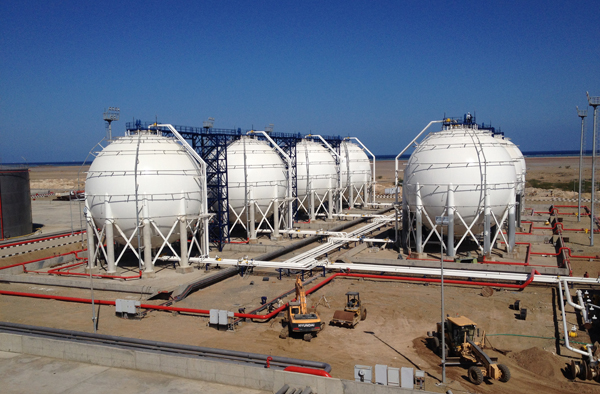
Cylindrical Pressure Vessels:
The most popular pressure vessels are cylindrical because they are more versatile and less expensive to manufacture than spherical containers. However, because of the fittings used to connect the heads, they are not as strong as spherical vessels. A cylinder called the shell and end caps called the heads make up cylindrical vessels. The weld line is the area where the head and shell are joined. The tangent line is where the head’s curvature starts.
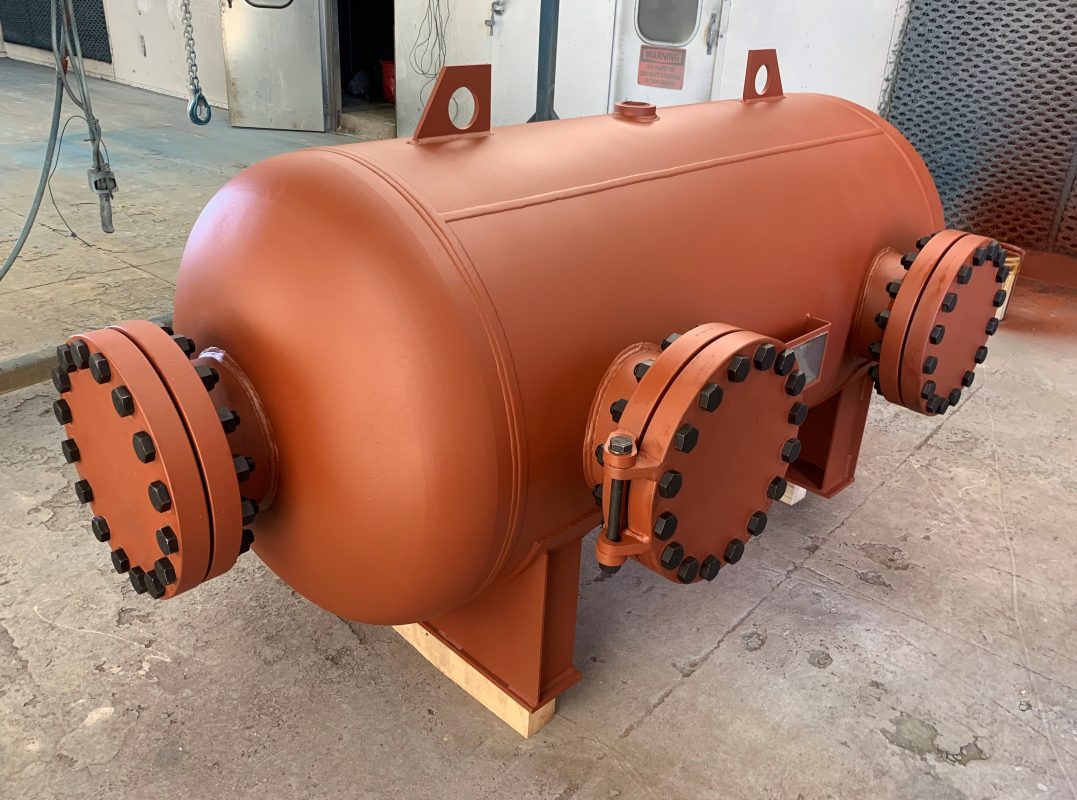
Pressure Vessel Orientation:
A cylindrical vessel’s axis can be either vertically or horizontally orientated.
- Vertical Vessel Orientation is used:
- When the floor space is small
- When the vessel volume is small
- In mixing tanks because it allows efficient mixing since the fluid is distributed at a smaller cross-sectional area
- When gas to liquid ratio is high
- In liquid-liquid separation for easier removal of components
- Horizontal Vessel Orientation is used:
- When the floor space is small
- When the vessel volume is small
Material Selection Of Pressure Vessels
The following factors must be taken into consideration while choosing the right material to build pressure vessels:
- Can fulfil the strength demands of a certain application. Throughout the pressure vessel’s service life, materials must endure a range of internal and exterior pressures as well as structural stresses.
- Resistance to corrosion Since a pressure vessel is intended to remain dependable in challenging settings, this is one of its most crucial qualities.
- Income from Investment. Throughout the pressure vessel’s lifecycle, the costs of materials, fabrication, and maintenance must be taken into account. To choose the best material that produces the lowest cost, economic assessments are conducted. If purchasing a pressure vessel is profitable, the Return on Investment needs to be studied and evaluated.
- Simplicity in fabrication and upkeep. Metal sheets must be well-machined and weldable since they are shaped to create the pressure vessels’ geometry. Internals of the vessel must be simple to install.
- Availability. Pressure vessel materials in the region of the maker must be easily accessible in standard sizes.
The following are the materials that are frequently used to build pressure vessels:
- Carbon Steel. A steel variety with a greater carbon content of up to 2.5 percent is called carbon steel. The strong tensile strength of carbon steel containers at low wall thickness makes them ideal for a variety of applications. They are subject to vibration and collision. However, due to its tremendous strength, carbon steel is challenging to bend and mold into various shapes. Since it lacks chromium, it is also more prone to corrosion and rusting than stainless steel.
- Stainless Steel. A form of steel known as stainless steel has a lower carbon percentage, a greater chromium concentration of up to 10.5 to 30 percent, and trace levels of nickel. They have a high chromium content, which is responsible for their exceptional chemical, corrosion, and weathering resistance. To stop oxygen from diffusing into the metal’s core, a thin, inert layer of chromium oxide is created there. It has excellent strength for a thin wall thickness, just like carbon steel. Due to its greater ductility and elasticity compared to carbon steel, it is simpler to form.
- Hastelloy. The first alloy developed by Haynes International, Inc. is called Hastelloy and is made of nickel, chromium, and molybdenum. In the petrochemical, energy, and oil and gas industries, it is a frequently used material for reactors, pressure vessels, and heat exchangers. It is a substance that can be utilized in nuclear reactors. It possesses exceptional resistance to cracking, oxidizing, and reducing chemicals as well as corrosion. High temperatures do not affect its strength. Due of its strong ductility, it can be easily welded, molded, and shaped. Its service life can last up to several decades with careful maintenance, which boosts its cost-efficiency.
- Nickel Alloys provide good resistance to corrosion, weathering, and thermal expansion. The nickel alloy’s heat resistance is further increased by the addition of chromium. In the oil and gas sector, cryogenic applications, and other extreme environments, pressure vessels made of nickel alloys are frequently utilized. Additionally, its service life is longer. It requires more money to fabricate and is challenging to work with. To preserve their sturdiness and dependability, nickel alloys must be pure.
- Aluminum is renowned for having a high strength-to-density ratio, making it both highly durable and light in weight. Compared to stainless steel, it is less expensive to make. Additionally, it resists rusting well. In laboratory-scale applications, aluminum jars are frequently utilized. However, due to its lower density—which is one-third that of stainless steel—it is not appropriate for high-pressure applications.
- Titanium has a thin wall thickness while still providing great strength and stiffness. It is non-toxic, exhibits strong corrosion resistance, and is biocompatible. Because it melts at a higher temperature than steel and aluminum, it is perfect for applications involving higher temperatures. It is the perfect material for heat exchangers since it also promotes effective heat transmission and has good thermal conductivity.
Design Of Pressure Vessel
The following variables are utilized in pressure vessel design calculations. These factors are crucial in determining the shell and head wall thickness.
- Design Pressure. Calculating the vessel parameters requires knowing the design pressure. It is derived from the maximum operational pressure, which represents the expected pressure spikes during disturbance conditions including startup, emergency shutdown, and process irregularities. It always exceeds the operating pressure limit. To reduce the risk of explosions, a vessel’s pressure relief mechanism is also based on this value.
- Maximum Allowable Work Pressure (MAWP). In accordance with its design temperature, the vessel must operate at the MAWP, which is the greatest permitted pressure as measured at the top of the equipment. It is the maximum pressure that the vessel’s weakest point can withstand at its design temperature. The American Society of Mechanical Engineers (ASME) has set an MAWP value, and companies use this value to ensure that the vessel won’t run above it in order to build safety precautions and prevent explosions.
- Design Temperature. As strength declines with rising temperature and becomes brittle at very low temperatures, temperature has a significant impact on the maximum allowed stress. When determining the maximum permitted pressure, the pressure vessel shouldn’t be used at a temperature higher than that. Always, the design temperature is both lower than the minimum temperature and higher than the maximum operational temperature.
- Maximum Allowable Stress. The amount of maximum stress that the material can withstand is multiplied by a safety factor to determine the maximum permitted stress. The safety factor takes into consideration any departures from the pressure vessel’s ideal design and operation.
- Joint Efficiency. There are four types of welded joints recognized by the ASME Boiler and Pressure Vessel (BPV) Code:
| Category A | Longitudinal or spiral welds in the main shell, necks or nozzles, or circumferential welds connecting hemispherical heads to the main shell, necks or nozzles. |
| Category B | Circumferential welds in the main shell, necks or nozzles or connecting a formed head other than hemispherical. |
| Category C | Welds connecting flanges, tubesheets or flat heads to the main shell, a formed head, neck or nozzle. |
| Category D | Welds connecting communicating chambers or nozzles to the main shell, to heads or to necks. |
- Corrosion Allowance. Corrosion allowance is defined as an extra thickness (e.g., 3mm) normally added to carbon and low alloy steel to mitigate the CO2 corrosion rate. From: Subsea Valves and Actuators for the Oil and Gas Industry, 2021
Quality Testing and Inspection of Pressure Vessels
The pressure vessel’s dependability is tested using the following techniques.
- Visual Testing is an essential component of pressure vessel maintenance. Prior to being put into service following installation or repair, the item must be inspected at least once every five years. Both the interior and exterior of the vessel structure are examined by a skilled inspector. The inspector examines the entire vessel structure for problems such as corrosion, cracks, distortion, blistering, fluid leakage, and other defects.
- Ultrasonic Testing utilizes high-frequency sound waves to detect surface and subsurface flaws and to measure the wall thickness of the pressure vessel. The substance absorbs the ultrasonic sound waves, which are then reflected back into an electrical signal by a transducer. If there are defects, the reflected waves are disturbed.
- In Radiographic Testing, the surface and subsurface of a pressure channel are visualized using gamma or x-rays. The reflected rays will be warped after it passes any discontinuities, gaps, and change in density and will be exposed in the film. The surface preparation needed for radiographic testing is very minimal. Ionizing radiation handling, however, is more expensive and calls for a highly qualified operator.
- Magnetic Particle Testing can find surface discontinuities in ferromagnetic materials. The inspector conducts a magnetic current across the pressure vessel between two probes. If the material is free of flaws, the magnetic flux passes through it uninterrupted. The magnetic flux escapes the material, though, if there are cracks or any other flaws. Once ferromagnetic particles, either in the form of a liquid suspension or powder, are put to the vessel, the flaw will become more obvious.
- Liquid Penetrant Testing is commonly used on welded seams and plates. A tiny amount of liquid, known as the penetrant, is applied by the inspector to a potential problem region. The penetrant is allowed to settle after spraying and then wiped to clean the excess penetrant on the surface. The penetrant that has seeped into the fissures is then exposed by applying the developer.
- Pressure Testing. The ASME BPV Code mandates pressure testing to check for strength and leakage. There are two ways to measure pressure: pneumatic pressure testing uses air or nitrogen as the medium, whereas hydrostatic pressure testing uses water. Given that compressed liquid has a lower energy content than compressed gas, the latter is more advantageous from a safety standpoint. In order to do hydrostatic testing or pneumatic testing, air is removed from the vessel, and the unit is then filled with the test fluid until the internal pressure reaches 1.5 times the design pressure and 1.2 to 1.5 times, respectively. The fluid is then maintained continuously for at least 10 minutes. The inspector then looks for cracks and leaks in the system. To identify where the cracks are coming from, fluorescent dyes or tracers are applied. Pressure testing is typically carried out during a shutdown or as a validation test following a vessel’s damage repair.
Conclusion
- Enclosed containers known as pressure vessels are used to store liquids, vapors, and gases at pressures that are either much greater or lower than the atmospheric pressure.
- Regulations like ASME BPVC and API 510 apply to the design, building, repair, and testing of pressure vessels. These rules are put in place to ensure safety while the pressure vessel is in use.
- Storage tanks, boilers, heat exchangers, and process vessels are the various types of pressure vessels based on their intended use. Both cylindrical and spherical pressure vessels are possible. More frequently, cylindrical vessels have heads that can be torispherical, ellipsoidal, or hemispherical. A pressure vessel’s axis can be either vertically or horizontally orientated.
- The criteria for material selection for a pressure vessel are: can meet the strength requirements of a certain application, corrosion resistance, return of investment, ease of fabrication and maintenance, and availability.
- The design pressure, maximum permissible working pressure, design temperature, maximum allowable stress, joint efficiency, and corrosion allowance are the crucial design elements for determining a pressure vessel’s specification.
- Metal sheets are forged, rolled, and welded to create the pressure vessel. For the vessel to effectively fulfil its duty, auxiliary tools and accessories are added.
- Visual, ultrasonic, radiographic, magnetic particle, liquid penetrant, and pressure testing are the techniques used to evaluate the dependability of pressure vessels.
